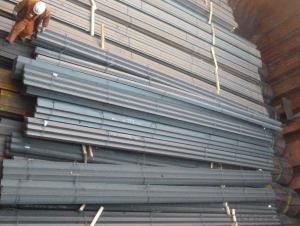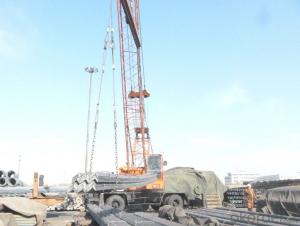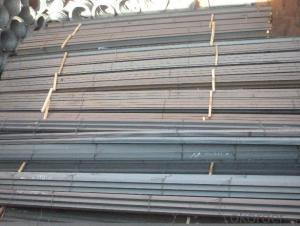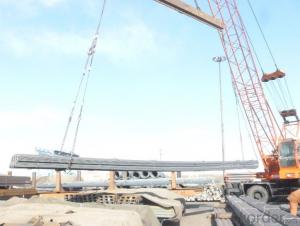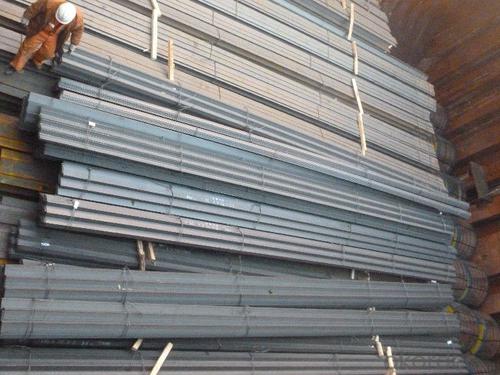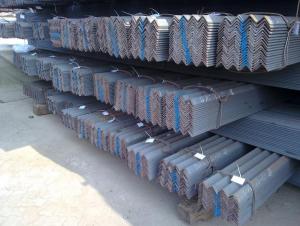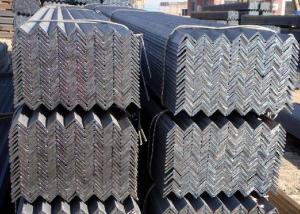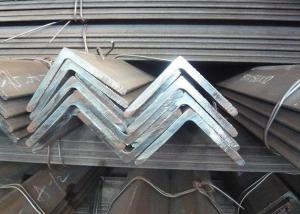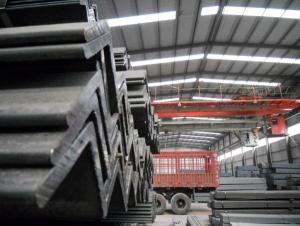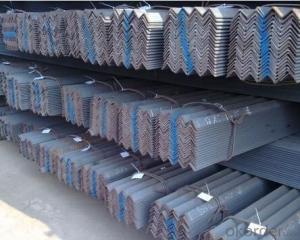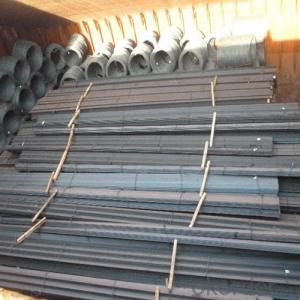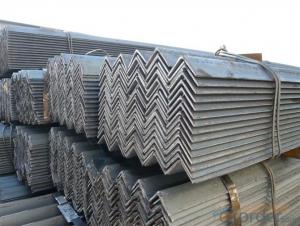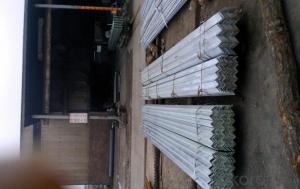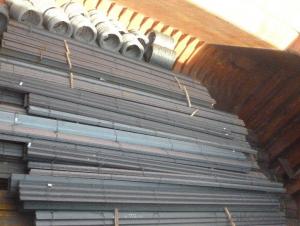Hot Rolled Structure Steel Equal Angle Bar
- Loading Port:
- China Main Port
- Payment Terms:
- TT or LC
- Min Order Qty:
- -
- Supply Capability:
- -
OKorder Service Pledge
OKorder Financial Service
You Might Also Like
Product Description:
OKorder is offering Structure Steel Hot Rolled Angle Bar at great prices with worldwide shipping. Our supplier is a world-class manufacturer of steel, with our products utilized the world over. OKorder annually supplies products to European, North American and Asian markets. We provide quotations within 24 hours of receiving an inquiry and guarantee competitive prices.
Product Applications:
Trusses;
Transmission towers;
Telecommunication towers;
Bracing for general structures;
Stiffeners in structural use.
Product Advantages:
OKorder's Structure Steel Hot Rolled Angle Bar are durable, strong, and resist corrosion.
Main Product Features:
· Premium quality
· Prompt delivery & seaworthy packing (30 days after receiving deposit)
· Corrosion resistance
· Can be recycled and reused
· Mill test certification
· Professional Service
· Competitive pricing
Product Specifications:
1.Standards:GB,ASTM,BS,AISI,DIN,JIS
2.Invoicing on theoretical weight or actual weight as customer request
3.Material: JIS G3192,SS400;SS540.
4. Payment terms:
1).100% irrevocable L/C at sight.
2).30% T/T prepaid and the balance against the copy of B/L.
3).30% T/T prepaid and the balance against L/C
5.Sizes:
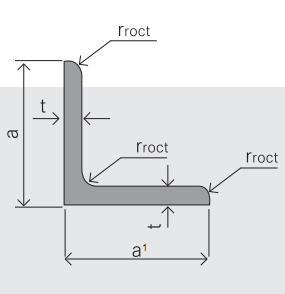
6. Material Specifications:
Grade | Yield Strength,N/mm² | Extension Strength N/mm² | |||
Thickness of Steel,mm | |||||
≦16 | >16-≦40 | >40-≦100 | >100 | ||
SS330 | ≧205 | ≧195 | ≧175 | ≧165 | 330-430 |
SS400 | ≧245 | ≧235 | ≧215 | ≧205 | 400-510 |
SS490 | ≧285 | ≧275 | ≧255 | ≧245 | 490-610 |
SS540 | ≧400 | ≧390 | - | - | ≧540 |
Packaging & Delivery of Angle Steel
1. Transportation: the goods are delivered by truck from mill to loading port, the maximum quantity can be loaded is around 40MTs by each truck. If the order quantity cannot reach the full truck loaded, the transportation cost per ton will be little higher than full load.
2. With bundles and load in 20 feet/40 feet container, or by bulk cargo, also we could do as customer's request.
Production flow of Angle Steel
Material prepare (billet) —heat up—rough rolling—precision rolling—cooling—packing—storage and transportation
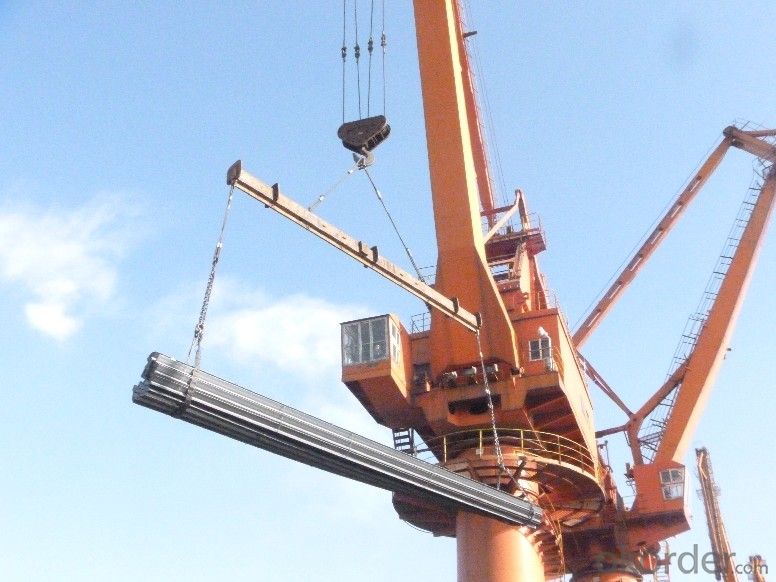
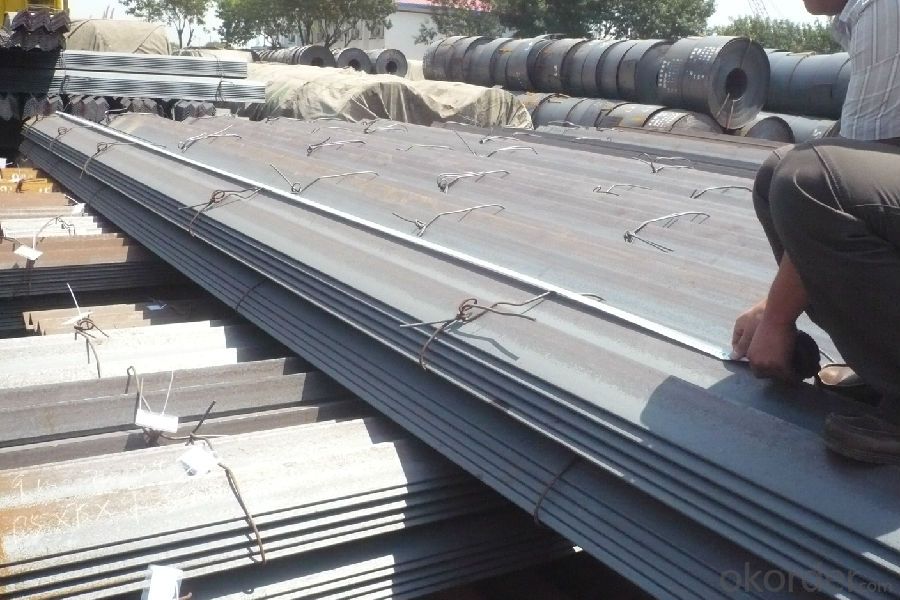
FAQ:
Q1: Why buy Materials & Equipment from OKorder.com?
A1: All products offered byOKorder.com are carefully selected from China's most reliable manufacturing enterprises. Through its ISO certifications, OKorder.com adheres to the highest standards and a commitment to supply chain safety and customer satisfaction.
Q2: How do we guarantee the quality of our products?
A2: We have established an advanced quality management system which conducts strict quality tests at every step, from raw materials to the final product. At the same time, we provide extensive follow-up service assurances as required.
Q3: How soon can we receive the product after purchase?
A3: Within three days of placing an order, we will begin production. The specific shipping date is dependent upon international and government factors, but is typically 7 to 10 workdays.
Q4: What makes stainless steel stainless?
A4: Stainless steel must contain at least 10.5 % chromium. It is this element that reacts with the oxygen in the air to form a complex chrome-oxide surface layer that is invisible but strong enough to prevent further oxygen from "staining" (rusting) the surface. Higher levels of chromium and the addition of other alloying elements such as nickel and molybdenum enhance this surface layer and improve the corrosion resistance of the stainless material.
- Q: What are the considerations for selecting the appropriate steel angle finish?
- When selecting the appropriate steel angle finish, there are several considerations to keep in mind. Firstly, the intended use and environment of the steel angle should be considered. If the angle will be exposed to harsh weather conditions or corrosive substances, a finish with high resistance to corrosion, such as galvanized or stainless steel, would be suitable. Additionally, the aesthetic requirements of the project should be taken into account. Different finishes, such as powder coating or painted finishes, can provide a range of colors and textures to enhance the appearance of the steel angle. Finally, the budget and cost-effectiveness of the finish should be considered, as some finishes may be more expensive than others. Overall, it is important to select a steel angle finish that meets both the functional and aesthetic requirements of the project while being compatible with the intended environment.
- Q: What are the typical lengths of steel angles available in the market?
- The market offers a range of steel angle lengths to meet specific project needs and requirements. While there are standard lengths readily available, ranging from 20 to 40 feet, such as 20, 25, 30, 35, and 40 feet, customization is also possible through special orders or fabrication. This flexibility allows for meeting precise project requirements in construction and industrial applications, where steel angles are used for structural support, framing, and bracing.
- Q: How do you calculate the buckling strength of a steel angle?
- Several factors must be taken into account in order to calculate the buckling strength of a steel angle. The buckling strength refers to the angle's ability to withstand buckling or collapse under applied loads. To begin, the geometry of the steel angle must be established. This involves determining the angle's dimensions, including the length of the legs and the thickness of the steel. Additionally, the cross-sectional properties, such as the moment of inertia and section modulus, need to be computed. Following that, the effective length of the angle needs to be determined. The effective length measures the angle's level of restraint against buckling. It depends on factors such as the boundary conditions and connection details. The effective length can differ for various modes of buckling, such as flexural or torsional buckling. Once the effective length is known, the critical buckling load can be calculated using an appropriate buckling equation. Various buckling equations are available, depending on the boundary conditions and mode of buckling. For example, the Euler buckling equation can be used for long, slender angles subjected to axial compression. Other equations, such as the Johnson buckling equation, may be employed for more complex loading scenarios. The critical buckling load can then be converted to an allowable stress using a suitable safety factor. The safety factor accounts for uncertainties in the calculation and ensures that the angle can safely bear the applied load without buckling. Design codes or industry standards typically specify the safety factor. In conclusion, calculating the buckling strength of a steel angle involves determining its geometry and effective length, applying an appropriate buckling equation, and converting the critical load to an allowable stress using a safety factor. It is essential to consult relevant design codes and standards to ensure accurate and safe calculations.
- Q: How do you calculate the shear force on a loaded steel angle?
- To calculate the shear force on a loaded steel angle, you need to determine the applied load on the angle and consider the angle's cross-sectional properties. Shear force can be calculated by multiplying the applied load by the appropriate factor of safety, and dividing it by the cross-sectional area of the angle.
- Q: What are the different grades of steel used for manufacturing steel angles?
- There are several different grades of steel that are commonly used for manufacturing steel angles. These include: 1. Mild Steel: This is the most common grade of steel used for manufacturing steel angles. It has a low carbon content and is relatively inexpensive. Mild steel angles are suitable for a wide range of applications and have good weldability and formability. 2. High-strength low-alloy (HSLA) steel: This grade of steel contains small amounts of alloying elements such as copper, vanadium, or niobium, which enhance its strength and toughness. HSLA steel angles are commonly used in structural applications where high strength and durability are required. 3. Stainless Steel: Stainless steel angles are manufactured using alloys that contain a high percentage of chromium, which provides excellent corrosion resistance. These angles are commonly used in environments where corrosion is a concern, such as coastal areas or chemical plants. 4. Carbon Steel: Carbon steel angles are made from a combination of iron and carbon, with carbon content typically ranging from 0.05% to 2.1%. The higher the carbon content, the stronger and harder the steel. Carbon steel angles are commonly used in construction and machinery manufacturing. 5. Alloy Steel: Alloy steel angles are made by adding various alloying elements such as manganese, nickel, chromium, or molybdenum to carbon steel. These additions improve the strength, hardness, and resistance to wear and corrosion of the steel. Alloy steel angles are commonly used in heavy-duty applications such as mining equipment or industrial machinery. The choice of grade of steel for manufacturing steel angles depends on the specific requirements of the application, including the desired strength, durability, corrosion resistance, and cost.
- Q: Can steel angles be galvanized or coated for corrosion resistance?
- Steel angles have the capability to undergo galvanization or coating in order to achieve corrosion resistance. Galvanization is a widely utilized technique for safeguarding steel against corrosion, wherein a layer of zinc is applied to the surface. This method establishes a barrier between the steel and its surroundings, effectively preventing the formation of rust. Alternatively, steel angles can be coated with materials that possess corrosion-resistant properties, such as epoxy or powder coatings. These coatings serve as a protective shield, preventing moisture and other corrosive substances from reaching the steel surface. By employing galvanization or coatings, the lifespan of steel angles can be significantly extended, allowing them to maintain their structural integrity even in highly corrosive environments.
- Q: What are the different types of steel angles used in manufacturing?
- In manufacturing, a variety of steel angles are utilized, each possessing unique characteristics and applications. Some commonly encountered types include: 1. Equal Angle: This steel angle features equal sides and angles, forming a 90-degree angle. It finds frequent use in structural applications where strength and stability are paramount, such as framing and supports. 2. Unequal Angle: As its name implies, this steel angle possesses unequal sides and angles. It is often employed in applications necessitating varying load-bearing capacities or the creation of different shapes during manufacturing processes. 3. L-Angle: This steel angle, also referred to as L-shaped angles, exhibits a 90-degree bend with unequal sides. It sees common use in reinforcing corners, as well as in construction and fabrication projects. 4. T-Angle: T-angles possess a T-shaped cross-section, with one side extending vertically and the other horizontally. They are frequently utilized as structural supports or in applications requiring additional strength and rigidity. 5. Flat Bar Angle: This steel angle possesses a flat surface on one side and a right-angle bend on the other. It is commonly employed for bracing, supports, and framing in manufacturing and construction projects. 6. Slotted Angle: Slotted angles are characterized by having holes or slots running along their length, allowing for convenient adjustment and customization. They find regular use in shelving, racks, and storage systems within manufacturing and warehouse environments. These examples merely scratch the surface of the diverse range of steel angles employed in manufacturing. The specific type chosen depends on project requirements such as load-bearing capacity, structural integrity, and desired shape or configuration.
- Q: How do you prevent steel angles from twisting?
- To prevent steel angles from twisting, various methods can be utilized: 1. Accurate fabrication techniques: Ensuring precise and accurate fabrication of steel angles is crucial. This involves making straight and square cuts to maintain the angles' structural integrity and prevent twisting. 2. Implementation of bracing and supports: During installation, it is important to use suitable bracing and supports to provide stability. Temporary supports, diagonal bracing, or cross bracing can be employed, depending on the specific application. 3. Utilization of proper welding techniques: When joining steel angles, employing appropriate welding techniques helps minimize distortion and twisting. This includes selecting the correct welding process, controlling heat effectively, and using suitable fixturing to hold the angles in place during welding. 4. Adoption of anchoring methods: Depending on the application, anchoring methods such as bolting, screwing, or welding the steel angles to other structural elements can prevent twisting. These methods enhance stability and prevent rotation or twisting when subjected to external forces. 5. Regular inspections and maintenance: Conducting frequent inspections is important to identify any signs of twisting or distortion in steel angles. If any issues are detected, immediate corrective action should be taken to rectify the problem and prevent further twisting. By combining accurate fabrication, proper bracing and supports, suitable welding techniques, anchoring methods, and regular maintenance, steel angles can be effectively prevented from twisting, ensuring their structural stability in the long run.
- Q: Can steel angles be used in the construction of storage tanks?
- Yes, steel angles can be used in the construction of storage tanks. Steel angles provide structural support and enhance the overall integrity of the tank. They are commonly used for the construction of tank roofs, tank bottoms, and tank supports. Their strength and durability make them suitable for withstanding the pressure and weight of the tank's contents.
- Q: What are the alternatives to steel angles in construction?
- There are several alternatives to steel angles in construction that offer different advantages and disadvantages depending on the specific application. 1. Aluminum angles: Aluminum angles are lightweight and corrosion-resistant, making them a popular choice for outdoor construction projects. They are also easily machinable and have good electrical conductivity. However, aluminum angles may not have the same strength and load-bearing capacity as steel angles, making them less suitable for heavy-duty structural applications. 2. Fiberglass angles: Fiberglass angles are lightweight, non-conductive, and highly resistant to corrosion and chemical damage. They are commonly used in industries where exposure to harsh environments, such as water or chemicals, is a concern. However, fiberglass angles may not have the same strength as steel angles and may require additional reinforcement for heavy loads. 3. Carbon fiber angles: Carbon fiber angles are lightweight, high-strength, and have excellent resistance to corrosion. They are commonly used in applications where weight reduction is critical, such as aerospace and automotive industries. However, carbon fiber angles tend to be more expensive than steel angles and may require specialized manufacturing techniques. 4. Wood angles: Wood angles, typically made from hardwood or engineered wood products, are a traditional alternative to steel angles in construction. They are readily available, cost-effective, and easy to work with. Wood angles are often used in residential and light commercial construction projects. However, wood angles may not have the same strength and durability as steel angles and may be more prone to warping, cracking, or rotting over time. It's important to consider the specific requirements of the construction project, including the load-bearing capacity, environmental conditions, and budget, when choosing an alternative to steel angles. Consulting with a structural engineer or construction professional can help determine the most suitable option for each specific scenario.
Send your message to us
Hot Rolled Structure Steel Equal Angle Bar
- Loading Port:
- China Main Port
- Payment Terms:
- TT or LC
- Min Order Qty:
- -
- Supply Capability:
- -
OKorder Service Pledge
OKorder Financial Service
Similar products
Hot products
Hot Searches
Related keywords
